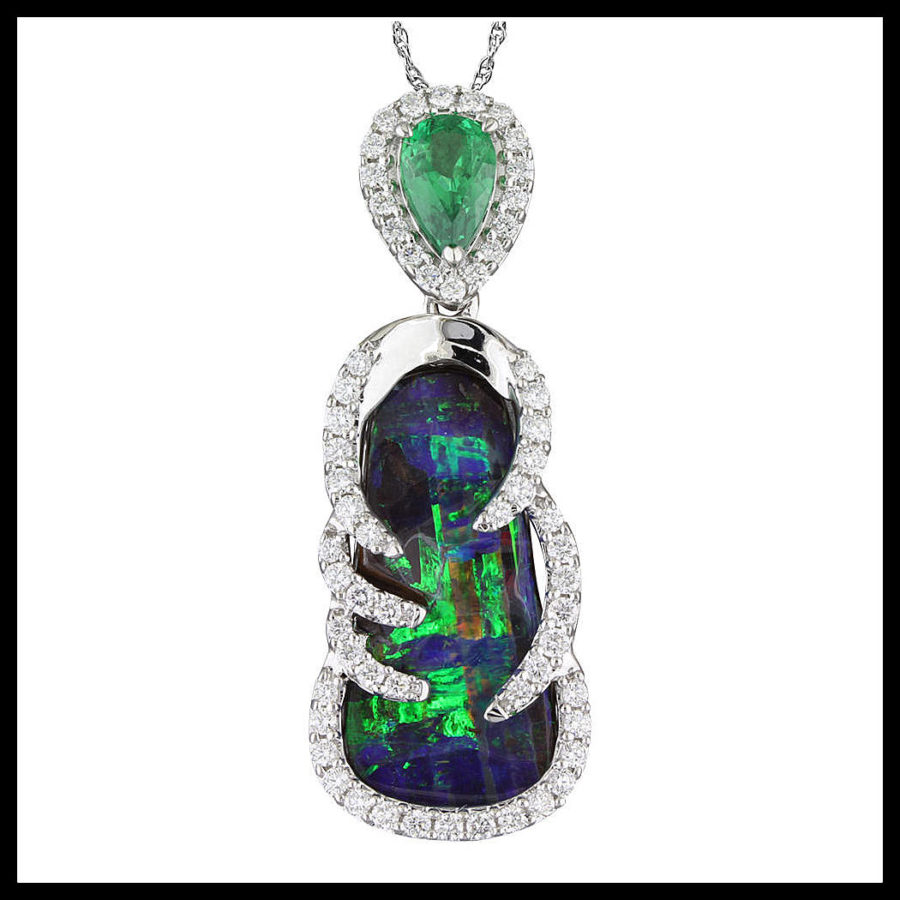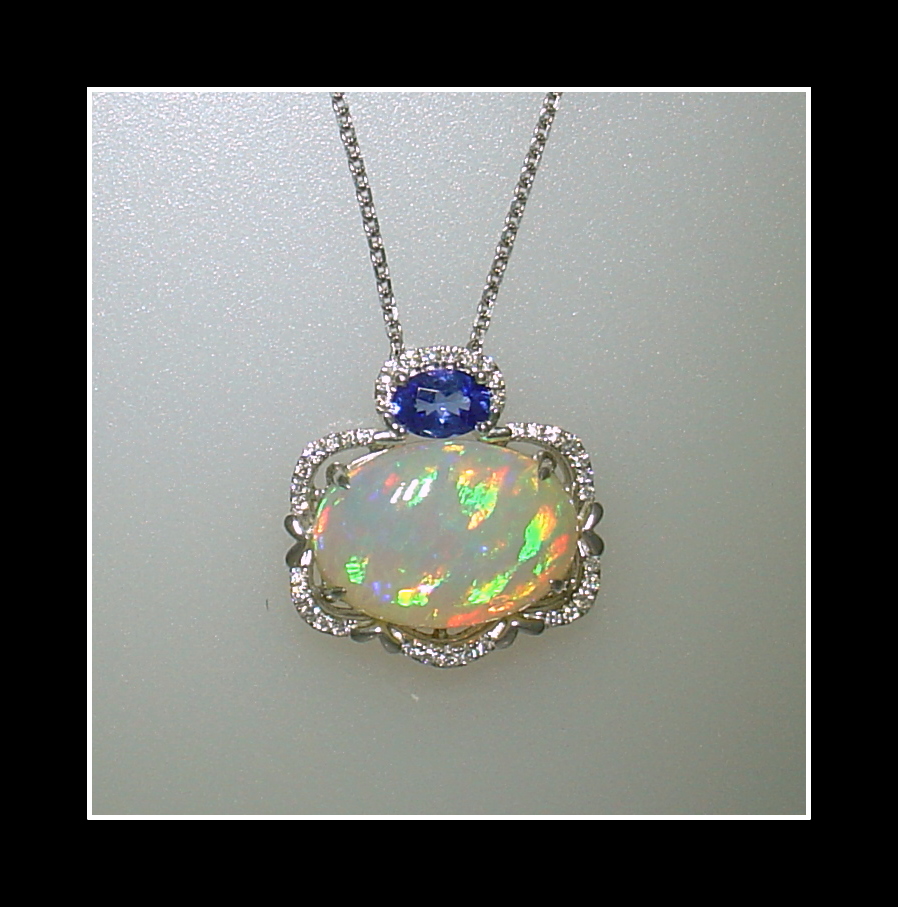

October’s Birthstone is Opal. Many cultures have credited opal with supernatural origins and powers. Arabic legends say it falls from the heavens in flashes of lightning. The ancient Greeks believed opals gave their owners the gift of prophecy and guarded them from disease. Europeans have long considered the gem a symbol of hope, purity, and truth. Opal is considered an October birthstone. Some people think it’s unlucky for anyone born in another month to wear an opal. But that particular superstition comes from a novel written in the 1800s (Anne of Geierstein by Sir Walter Scott), and not from any ancient belief or experience. In fact, throughout most of history, opal has been regarded as the luckiest and most magical of all gems because it can show all colors. Once, it was thought to have the power to preserve the life and color of blond hair.
Opal is the product of seasonal rains that drenched dry ground in regions such as Australia’s semi-desert “outback.” The showers soaked deep into ancient underground rock, carrying dissolved silica (a compound of silicon and oxygen) downward. During dry periods, much of the water evaporated, leaving solid deposits of silica in the cracks and between the layers of underground sedimentary rock. The silica deposits formed opal. Opal is known for its unique display of flashing rainbow colors called play-of-color. There are two broad classes of opal: precious and common. Precious opal displays play-of-color, common opal does not.
Opal’s toughness is very poor to fair, making opal a gem that is suitable for jewelry but requires care when wearing so as to not scratch or break the stone. The only safe way to clean opal is with warm, soapy water.
Julz by Alan Rodriguez can safely clean and check your opal jewelry.
